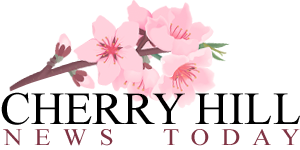For many households in New Jersey, mornings during the back-to-school rush can be chaotic and unpredictable. Amidst the hustle and bustle, accidents can happen. Kids can’t locate their shoes, teenagers are reluctant to leave their beds, and in the midst of this frenzy, a child might accidentally receive a double dose of medicine. What should parents or caregivers do in such a situation? The answer is simple: contact the NJ Poison Control Center to assess whether further action is necessary.

As we enter September, a month marked by the return to school for families and educators alike, it’s also a peak period for the poison control center. Diane Calello, Executive and Medical Director of the New Jersey Poison Control Center at Rutgers New Jersey Medical School, explains, “September is not only a busy time for families and school employees, it’s also a busy time for us at the poison center. Potentially dangerous products are commonly found where we live, work, and play. Situations can become dangerous quickly and without warning.”
While we often associate classrooms with safety, many of the substances and products that we are cautious about at home can also be present in schools and classrooms. These items can pose risks when used incorrectly, in excessive quantities, or by the wrong individuals. They encompass medicines, cleaning agents, disinfectants, school and craft supplies, hand sanitizers, vitamins, supplements, food items, coin and disc batteries, alcohol, and marijuana edibles.
Calello emphasizes, “When you combine distraction with easy access and improper storage of potentially harmful products, accidents become more likely.” Every day, individuals of all ages encounter potentially hazardous items, ranging from medicines and chemicals to adult recreational products and substances of abuse.
The NJ Poison Control Center handles cases involving accidental and deliberate exposure to substances and products found in all environments: homes, workplaces, schools, outdoor settings, among friends, and within families. Consulting the poison control center as a first step can determine the difference between a mild health issue and a more serious one that necessitates a hospital visit.
Calello adds, “The poison center isn’t just a trusted medical resource for parents and caregivers; it’s also an invaluable asset for school administrators, teachers, and nurses. With the assistance of the poison center, most people can avoid emergency room visits and other medical services.”
To safeguard children from potential poisons at home and school, consider these safety recommendations:
-
Secure Medicines: Keep track of medicines at home to prevent accidental exposure, misuse, or abuse. Always lock them away after use to ensure they cannot be unintentionally ingested or taken.
-
Lunch Preparation: Before preparing lunches, remember to wash hands and surfaces. Pack food in appropriate containers, ensuring hot food stays hot using thermoses and insulated containers, while cold food remains chilled with ice packs or cooling bags.
-
Hand Sanitizers: Hand sanitizers can be dangerous if ingested accidentally or intentionally. Young children should have limited, monitored access to hand sanitizer, and it should not be stored in their backpacks, lunch bags, or luggage.
-
Art Supplies: Whether provided by the school or brought in by students and parents, label all supplies as non-toxic and maintain them in their original containers.
-
Hand Hygiene: Encourage frequent handwashing, especially before eating and before or after close interactions with others. Hand sanitizers are helpful, but washing with soap and water for at least 20 seconds is the most effective method.
-
Outdoor Vigilance: Keep a close watch on children when they are outdoors, as many potential poisons may be lurking in plain sight. These include poison ivy, toxic wild mushrooms, pest control products, and maintenance chemicals.
If you suspect that someone has come into contact with a hazardous substance, don’t hesitate to contact the New Jersey Poison Control Center immediately for medical treatment advice. This valuable resource is accessible to everyone, including children, teenagers, and adults, serving as a vital medical reference for both the public and healthcare providers.



